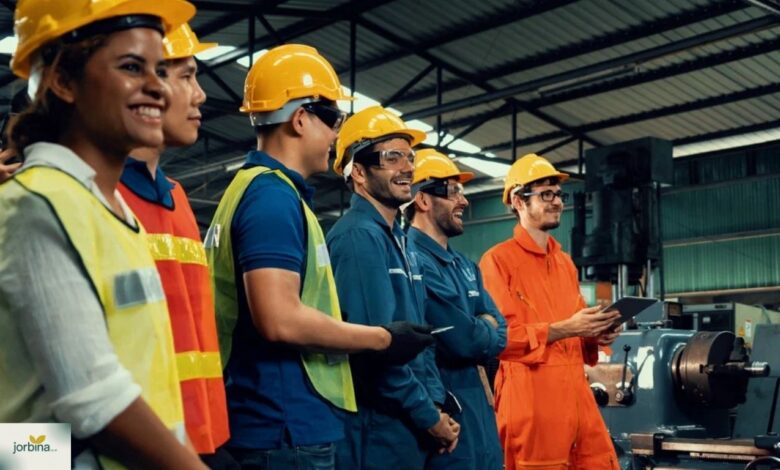Inside the World’s Safest Factory: Health Safety Manufacturing Secrets

Imagine stepping into a factory so safe that accidents seem unimaginable. Every worker moves confidently, machines hum without danger, and safety rules are as natural as breathing. That’s what makes this place feel like the world’s safest factory. In this article, we’ll explore the secrets of health safety in manufacturing, where careful planning, smart rules, and caring people come together to create a real safety culture.
What makes a factory feel safe?
If you asked someone what keeps them safe at school, they might say “no running in the hallways,” “wear your seatbelt,” or “look both ways before crossing.” In a factory, those rules are similar but more important, because big machines, chemicals, and heavy tools are involved. The aim is to make sure everyone gets home safely, day after day. And there are people whose jobs are all about keeping that promise—they work in what we call EHS manufacturing.
Green shoots of safety spread through the factory when everyone feels responsible. That includes the bosses, the safety experts, and every person on the floor. That’s the spirit of health safety manufacturing, or EHS—Environment, Health, and Safety—in action.
Understanding Health Safety Manufacturing
“Health safety manufacturing” is shorthand for a system that tries to stop people from getting injured, protect their health, and avoid harming the environment in places where goods are made. It covers everything from making sure machines are guarded, to training workers on chemicals to planning how to act in emergencies.
Why it matters
Factories can be dangerous. In the UK manufacturing sector alone, tens of thousands of workers face injuries each year. For example, from 2020 to 2023, around 91,000 workers suffered work‑related ill health, and about 46,000 had non‑fatal injuries in manufacturing. There were 15 fatal injuries in 2022/23, and the total economic cost of ill health and injury in the sector reached around £1.4 billion in 2021/22. These statistics come from the Health and Safety Executive (HSE), the UK’s top regulator for workplace safety.
Understanding these risks matters because they show why strong health safety systems are not optional—they’re essential for human and financial well-being.
The Building Blocks of the World’s Safest Factory
So, what goes into creating a factory where accidents hardly happen and health is protected? Let’s look at the key pieces.
Risk Assessment and Planning
Every change or process is examined carefully: What could go wrong? How likely is it? How bad would it be? That’s what risk assessments answer. The results lead to control measures—things like machine guards, safe storage, ventilation, and emergency procedures—that are chosen specifically for each area and task.
Training and Awareness
Workers need to know the risks and what to do. Training covers things like using personal protective equipment (PPE), handling chemicals safely, removing power from machines (lockout/tagout), and what to do if there’s a fire or spill. It often includes toolbox talks—short safety reminders before shifts—and sometimes even virtual reality sessions to make it stick.
Machine Guarding and Controls
Unsafe machines cause accidents. That’s why factories use guards to stop fingers or clothing from getting pulled in, safety interlocks, and alarms. Recent UK cases show the cost of failing to do this: one company was fined £20,000 after a worker’s hand was severed by an unguarded boring machine. Another lost over £50,000 when a young apprentice’s glove got caught in an unguarded drill.
Managing Hazards and Chemicals
Factories often work with dangerous substances—dust, silica, oils, vapours, noise, and vibrations. Special measures like local exhaust ventilation, respiratory gear, and limits on tool use protect workers. The HSE inspects places using silica regularly to stop lung disease from developing over time.
Monitoring and Continuous Improvement
Factories keep watching: tracking injuries, near misses, and health issues like vibration sickness or musculoskeletal problems. Supervisors check equipment, staff update risk assessments regularly, and there’s always feedback from the people involved.
A Culture of Safety
Perhaps the most important ingredient is a culture where safety matters to everyone. Leaders show they care, workers feel comfortable raising concerns, and health and safety are part of daily life, not just made-up rules.
How the Best Factories Become the World’s Safest
Let’s imagine how a factory might earn the title of “world’s safest.” It’s still everyday work, but done thoughtfully and consistently.
Clear, simple rules everywhere
When rules are easy to understand—like “keep floor markings clear,” or “wear your gloves here”—everyone knows how to act. If PPE is always provided, worn, and checked, there’s little room for error.
Smart use of technology and design
Some places use sensors to alert if machines are running without guards. Others draw safe walkways in bright lines between people and moving vehicles. Some factories use motion sensors, ear defenders, and automated shutdowns to prevent accidents before they happen.
Regular health checks
Even if machinery is safe, health can be harmed quietly. Breathing dusty air or using vibrating tools for too long can cause illness. The best factories offer health surveillance, noise and vibration monitoring, and medical reviews to catch issues early.
Open communication
If someone spots a hazard, they should talk about it, without fear of blame. That’s how improvements are made faster. Effective teams hold brief safety talks, gather suggestions, and encourage workers to speak up.
Learning from mistakes
When something goes wrong—even a small incident—it’s investigated thoroughly. The goal isn’t to punish, but to fix the cause. Risk assessments are updated, training is improved, and similar events are prevented in the future.
Management that cares
Leadership must treat safety as a priority, not paperwork. They show up in the factory, listen to workers, and act. They push for regular checks, fresh training, and positive safety results.
Bringing It All Together: An Example Factory Story
Let’s walk through how one factory might become a safety star.
In a large plant making metal parts, management decided to aim for zero harm. They started by hiring strong EHS leadership and carrying out a full risk audit. They discovered risks including noisy equipment, unguarded machinery, dusty weld fumes, forklifts mixing with foot traffic, and inadequate training for new hires.
First, they redesigned the layout so forklifts and people had separate zones painted in high-contrast colours. Then they fitted guards on all exposed moving parts of the machines. They installed filtration systems near welding areas and used dampening pads to reduce vibration. PPE was standardised and made mandatory in defined zones.
Every employee went through training that included basic safety rules, emergency drills, and tool usage. Supervisors began to hold daily toolbox talks, often making them fun with quizzes or visual demonstrations. Staff felt confident raising concerns because suggestions were logged and rewarded. Health surveillance clinics were brought in for vibration and lung screening.
Every month, the safety team looked at incident data. Near misses dropped steadily. Injuries were few, with no serious accidents in years. When HSE inspectors visited, the factory was praised and spared fines because it showed real compliance, not just paperwork.
That environment felt safe. People knew it mattered. They felt looked after and took pride in the systems they helped shape.
Cultural and Community Impact
A factory like that sends ripples into the broader community. Local schools bring students on safe tours. Suppliers learn from it. Trade partners ask how they did it. It becomes a beacon—proof that manufacturing can be both productive and respectful of human health.
Many UK businesses share their story on HSE’s website, and employees speak about how they trust the place they work. Employers report improved morale, better retention, and even faster production because fewer accidents and less downtime occur.
Organizations like HSE UK publish research and guides to help other factories build similar systems. Visit their official site at hse.gov.uk to explore guidance, data, and best practices for improving safety in manufacturing.
FAQs
What is WHS in manufacturing?
WHS stands for Work Health and Safety, referring to laws and practices that protect workers in industrial settings.
What is HSE manufacturing?
HSE manufacturing refers to Health, Safety, and Environment practices specific to factories, often guided by the UK’s Health and Safety Executive.
What is safety in the manufacturing industry?
Safety in manufacturing means managing machines, chemicals, and processes so workers avoid injuries or illnesses.
What does EHS mean in manufacturing?
EHS stands for Environment, Health, and Safety; it’s a combined approach to protecting workers and surroundings in industrial workplaces.
What does OSHA mean in manufacturing?
OSHA is the U.S. Occupational Safety and Health Administration; it sets and enforces safety rules for factories in the United States.
Why It All Matters
When factories invest in health and safety, they protect people. But they also protect jobs, lower costs, and build trust. The best factories are not just machines and products—they are communities where people are respected and supported. That’s the real secret behind the world’s safest factory.
Making safety natural, not forced, is the art. It’s not about fancy tools or big budgets—it’s about listening, caring, planning, learning, and acting. Every guard installed, every talk held, every survey taken—that’s progress.
And when a factory makes safety part of daily life, it shows: health safety manufacturing is not just about avoiding risks. It’s about valuing people above all. That is how safety becomes second nature, and how a place becomes truly safe, not just on paper, but in practice.
Don’t forget visit our website



